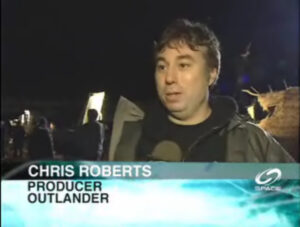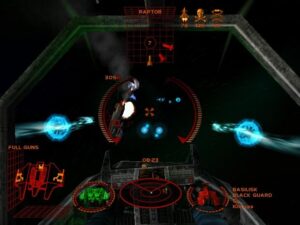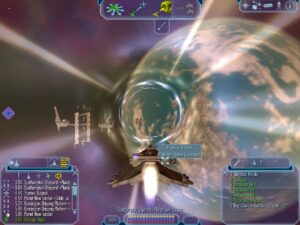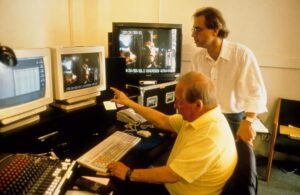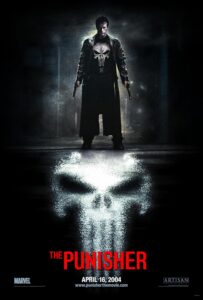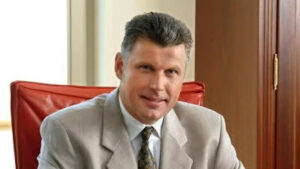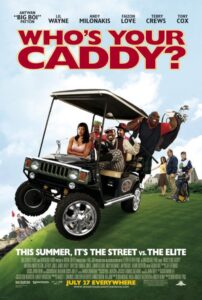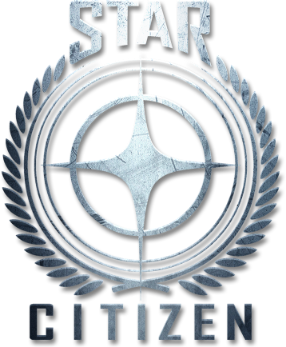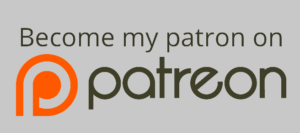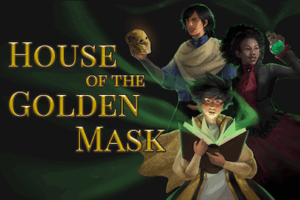Renga in Blue
Old Father Time (1983)

Liverpool and Stonehenge, the two important locations for today.
While concerts at Stonehenge on the summer solstice had been around since the 1890s, attracting crowds in the thousands, it wasn’t until the 1960s that “rowdy behavior” had started to annoy the locals enough to coax them into installing temporary barbed-wire and restricting access; only Druid revivalists were allowed starting in 1964.
Despite this prohibition, hippies kept showing up on the solstice anyway. One police report indicated “people came and strummed guitars in the field next to the monument”. The popularity of solstice gathering remained and in 1969 a group of two thousand crashed through the fence, interrupting the Druids who were busy with their own ceremony. This eventually led to Phil Russell, a “hippy icon” also known as Wally Hope, founding the Stonehenge Free Festival. The first happened in 1974, advertised by hand-written flyers from Russell himself.

Every Day is a Sun Day. Every One is a Wally. Every Where has a Heart. Every Festival is a Cosmic Battle Honour. Every Body is a Department of the Environment.
After the festival was over a group of 30 people calling themselves the “Wallies of Wessex” stayed in order to “discover the relevance of this ancient mysterious place.” They were evicted but simply returned later.
The festival tradition continued the next year as well, although Phil was not able to attend (he had been arrested for possession of acid); even after Phil died under mysterious circumstances in 1975, the festival kept going. Quoting my main source:
…when over 5,000 people turned up for the Stonehenge festival, hundreds of the festival-goers staged an invasion of the temple on the day of solstice, honouring Phil’s memory by scattering his ashes from a box, inscribed with the epitaph ‘Wally Hope, died 1975 aged 29: a victim of ignorance’…
The festival became a movement of freedom, sort of akin to the earlier iterations of the Burning Man festival in the United States. Hippies and travelers used it as a reason to gather, and the academic Kevin Hetherington notes that Stonehenge was “a kind of space in which people could do things that they couldn’t do anywhere else.”


The druids kept coming, even as the crowds got larger. Photos of the 1980 festival by Paul Seaton.
One of the attendees in the early 80s, when the crowd had reached tens of thousands, was a young Matthew Smith (born 1966), a celebrity of the British computing scene. He created an absolute sensation when he published Manic Miner with Bug-Byte Software (1983).
He had started programming in 1979 when he received a TRS-80, and even after the Spectrum ZX came out he still did his writing on a TRS-80. (Compare this to The Hobbit, which similarly was a port from TRS-80 to Spectrum as it used the same underlying chip.) From Matthew:
I did some of the graphics for The Birds And The Bees and then did Styx for Bug Byte. But Manic Miner took just eight weeks. There were 20 levels, but I did most of the testing on the first level. Once it was going, then it was just about designing the levels.
To modern (especially modern non-European audiences) it might seem puzzling looking at the game now, but it was an absolute sensation. He did things with the graphics and sound that seemed impossible for the ZX Spectrum (the sound plays continuously, which was essentially unheard of; as Matthew explained “you simply interrupt the action very frequently to send a signal to generate a tone”). Even a modern take calls it “the ZX Spectrum platform game — not equalled for many years.”
Due to payment issues (Bug-Byte owed 25,000 pounds at one point, according to Matthew) and the fact he had a “loophole” in his contract, he soon withdrew publishing from Bug Byte and left with Alan Maton to form his own company, Software Projects. (For a while, there were two versions of Manic Miner, one sold by Bug Byte and one by Software Projects; Bug Byte could keep selling the game as long as they still had stock.) The follow-up to Manic Miner, Jet Set Willy, was as hotly anticipated an item as software could be in the 80s. Alan Maton, Matthew’s business partner on the new venture, said:
Everyone went mad trying to rush them into the shops. We had people turning up at our offices all through the night — one guy flew up from London by plane, rushed in with his docket, collected his copies and flew back on the same plane which he had waiting for him.
Despite the influx of new money, Matthew was still not only a young teenager but one inclined to attend hippie Stonehenge festivals and (allegedly according to the press) he was “partying, getting drunk and falling over a lot” and there were later allegations of “debauchery” and a “self-destructive” spiral, potentially induced by so much fame and expectations. Even when making Jet Set Willy he was under immense strain.
Well, there was a lot of pressure, when you’ve had a success the pressure to follow it up is even more than there was to produce the… to succeed in the first place. And a lot of the pressure is supposed to be supportive, but it becomes actually just a nuisance. Like people waking you up because you’re sleeping too long and things like this… if you’re like having trouble finishing something, if you wake somebody up every time they’re alseep they’ll get it done quicker. It’s just like, I mean, probably anyone who’s had any success with anything has felt that kind of pressure… and some of them haven’t buckled under it. But I was buckling.
I should be careful to note despite the two games (Manic Miner and Jet Set Willy) being Software Project’s two best selling game by far, they do have a catalogue of other games they produced while still alive, including Spectrum ports of Dragon’s Lair, Lode Runner, and the Sierra On-Line educational game Learning With Leeper.

From Spectrum Computing.
After his two-fer of best-selling games (and an effort to create “Manic Miner III” that was aborted after four months) Matthew Smith eventually disappeared for a time and became a legend. He eventually re-surfaced in the 2000s and started to give interviews. In 2013 a psychedelic band named The Heyze immortalized him in song on a concept album.
Now we need to step back to 1983, because Matthew Smith is not our author today, but rather a 14-year-old D.J. Coathupe (also known as “Dave Coathupe” or “David Coathupe”). He had gone to a Bug-Byte in Liverpool with a text adventure he had written in BASIC for the BBC Micro.
I had no formal knowledge of programming … I remember being so proud of my 28 pages of code that I’d show family friends the length of the printout, rolling it out across the lounge floor.
While there Alan Maton showed him Manic Miner, which hadn’t come out yet. Dave was impressed, deciding (after the game became a hit) to make a BBC Micro conversion.
I hand copied the levels onto graph paper and wrote a small program to extract the character animations from the Spectrum version. I purposely mirrored the music from the Spectrum version despite the BBC Micro having more audio capability.
In order to get the game to work in high-resolution mode as he wanted he needed to do fancy screen-swapping tricks (“post Vsync timer interrupts using the 6522 VIA chip and then reprogramming the video control chip mid screen refresh and back again at the end of the frame”) which unfortunately caused flashing on some monitors but clearly indicated a technical proficiency. Despite Coathupe making the port all on his own, Maton was impressed and the game was published by Software Projects.
The royalties bought me more computer hardware and introduced me further into the Acorn computer scene.
This was when Software Projects was falling apart. (Jet Set Willy 2 came out, but that was the result of taking a CPC version of Jet Set Willy (which added levels) and backporting it to Spectrum, rather than any kind of new initiative on Matthew Smith’s part.) The timing here possibly helps explain why Jet Set Willy never made it to BBC Micro and Dave stayed away from games for a time. After graduation Dave instead went on to work on graphical utilities like image processing software for the Acorn Archimedes and the ill-fated desktop publishing program Tempest (which probably was never released). He eventually got back into games (still in graphics, now 3D), but we are floating way past the target, those 28 pages of code in BASIC our author was so proud of.

Via the Museum of Computer Adventure Game History.
Old Father Time’s staff and hour glass have gone missing and you need to find them “before the sands of time run out.”

Unusually for a BBC Micro game, text is in ALL CAPS. I am not sure the reason for this.

The game starts in what appears to be a standard forest maze. I spent a fair amount of time trying to map it imagining there were loops and dead ends everywhere.

It eventually dawned on me that this was not a maze but rather a regular grid, and in fact the best way to start was to simply go through each square of the grid and plot it out. The star below is the start point.

Along the edge, each room states “YOU ARE THE EDGE OF THE FOREST DO NOT VENTURE OUT OF IT WHATEVER YOU DO.” Disobeying this direction causes the player to “FLARE UP IN A PUFF OF SMOKE”.
(The fact you have been “summoned” and this curious behavior here makes me think we’re not supposed to be a “human” protagonist but rather some sort of daemon or sprite. We never get details on that aspect.)
One room has a “tall tree”:

The important command here is not GET LEAVES but MOVE LEAVES; there are four places where you can find things this way. Two are simply clues (marked on my map with green leaves).


The second clue (about digging for a key) will get used quite shortly; the clue about NOT AN OBJECT YOU MUST DROP is sort of a meta-clue which applies through the whole game. You are not allowed to drop things in general (they’ll vanish in a poof) and this ends up being very important for the end of the game.
The other two leaf-hidden things are objects: a bag of gold coins and a magic rod. In case you’re wondering, no, this is definitely not a “treasure hunt”, the gold is meant for a specific use case. To the east of the gold coins there’s a sign about “YOUR DESTINY LIES TO THE EAST” and if you go east you will eventually reach a cave with a boulder.
?MOVE BOULDER
YOU ARE AT THE ENTRANCE TO A CAVE. THERE IS A LARGE BOULDER BLOCKING THE WAY IN. YOU ATTEMPT TO MOVE THE BOULDER BUT IT IS MUCH TOO HEAVY FOR YOU.
“WAVE ROD” dispenses with the boulder (you can “LEVER BOULDER WITH ROD” as well but I only found this out looking at a walkthrough later).

To the west and east are “small damp caverns” that are apparently empty; based on the hint from the leaves, we’re supposed to go east and DIG three times.

After this, I took the key back to the door and … couldn’t open it. I tried UNLOCK DOOR and UNLOCK DOOR WITH KEY and USE KEY and INSERT KEY; it doesn’t help that the game has a weird “follow-up question” prompt it will sometimes use.

If you see the follow-up prompt, you’re doing it wrong. Also if you don’t you’re probably still doing it wrong.
I finally hit upon — well actually, no I didn’t hit upon, I got so befuddled I checked the walkthrough and found it wanted OPEN DOOR WITH KEY.
YOU INSERT THE KEY INTO THE LOCK. THE DOOR LETS OUT A LOUD CREAK! AND SWINGS OPEN.
There’s a second nasty trick right here I’ll come back to, but let’s look at the general map for this area first:

If you go all the way north and try to go east, you get fried by a light beam

The x5 part is a corridor where there are letters “too dim to read”, and we’ll get to those in a moment.

Without any real prompting or hint, you’re supposed to DIG at the catacombs. This will reveal “GEMS” that “ARE SET IN SUCH A WAY THEY MAKE A WORD” which is “EQUILIBRIUM”.
AS SOON AS YOU’VE READ THE WORD THE SOIL FALLS BACK OVER THE ROCK.
I tried the word everywhere, and you’re supposed to notice there’s two different messages that get displayed. In most rooms it says…
NOTHING HAPPENS.
…but if you are at the far end of the hall next to the deadly light, it says…
NOTHING SEEMS TO HAPPEN.
The game is going meta. In a pragmatic, physical sense, there is no difference between the two results; rather than engaging with a game just at a conveyance-of-plot level, you’re supposed to get at it as a piece of software, and since the two messages are different, nothing seems to happen means that the light is no longer deadly.

From here I was very stuck and I needed the walkthrough again. This is yet another meta-moment — or at least I think the author considered it that — but it comes across as a bug instead. After you dig and see the word EQUILIBRIUM, you can LOOK and you’ll see a LAMP in the room. If you leave and come back later and LOOK, the lamp won’t be there, so this isn’t even a matter of “you didn’t notice a lamp physically there” but rather a lamp only appears because you typed LOOK after typing DIG. This just doesn’t make physical sense any more.

At least I had some straightforward moments from here. With the lamp I could turn it on (or just type ON) and go over to the long corridor with the letters too faint to read. They spelled, individually, “EGMOA”.

EGMOA just gets the response “EH?” which the game was using for not-understood verbs, so I spent some time rearranging and got OMEGA.
NOTHING HAPPENS.
This is good! It means the verb was understood. While this was going on I wandered over to the southwest of the map and did LOOK (because of the weird lamp thing, I still don’t know the logic) and found a MIRROR in the darkness.
With the mirror and the word OMEGA in hand, I was able to get to the next part of the game.

To be clear: first you need to be holding the mirror to disperse the dazzling light, then you need to use OMEGA to warp to the next section. At this point, my inventory had: ROD, COINS, KEY, MIRROR, LAMP, although the LAMP doesn’t last long unless it gets turned off, because
A SWARM OF THIEVING MOTHS ATTRACTED TO LIGHT HAVE JUST STOLEN YOUR LAMP.
I needed the lamp back (just a game restore, and do OFF before OMEGA) but at least being in the darkness gave a hint as to what to do next.

Being invisible helps you get through the corridor, which has TERRY THE TROGLODYTE where AS HE GREETS YOU HE CLONKS YOU WITH HIS CLUB AND KILLS YOU. I don’t think I’ve played a Britgame with this much compacted weirdness and death and difficulty since Zodiac.

Doing things in the proper sequence: lamp off, wave rod, get through corridor, lamp on — leads to another difficult (or at least arbitrary) section which I managed to barely figure out.

While playing with verbs earlier, I knew that BREAK worked on things to vaporize them; this plus the common myth of “seven years bad luck” with a mirror let me to test BREAK MIRROR.

Whoops! Unfortunately things get even more arbitrary. To the north is a SMALL DARK ROOM where you SENSE SOMETHING MAGICAL but the game gives no further detail. I had neglected up until now to EXAMINE MIRROR (which at least I did because while I was trying to figure out how to avoid getting hit by the curse).

The genie comes out of the lamp via RUB LAMP, but unfortunately it isn’t like Adventureland and some other games where you just do it anywhere. The genie only comes out of the lamp while in the SOMETHING MAGICAL room, and I really don’t think there’s a hint; the game is just expecting people to keep testing everything everywhere, I suppose.

At least the mirror hint made it clear what to do after I summoned the genie.
While holding the STAFF OF POWER from the genie, you now can safely break the mirror and remove the dwarf curse.

There’s additionally a nearby pit you can now JUMP safely down into. Previously, JUMP was fatal. (It’s a good thing the game is linear, otherwise this would be outright impossible.)

This leads to the final section of the game, and would you believe it gets even more unfair?

To start with, there’s a sword just to the south of the pit landing you can pick up (no writing or weird hints on it, it’s just a sword). A little bit farther there’s a MEDUSA, and as hinted at by the mirror, you need to be holding the mirror to survive engaging with the creature at all; sadly it does not cause a bounce-and-turn-to-stone thing like some games. Instead you’re supposed to use the sword to kill the medusa.

Except KILL MEDUSA WITH SWORD and CHOP MEDUSA WITH SWORD and STAB MEDUSA WITH SWORD don’t work, and astonishingly, this is intentional. The right verb to use is a puzzle. Go back to the hint: it very specifically says you need to “slay” the medusa, hence the only correct command is SLAY MEDUSA WITH SWORD.

Also, the serpents are independent and you need to SLAY SERPENTS WITH SWORD as well in order to get by.
YOU STRIKE OUT AT MEDUSA’S HEAD TO ENSURE ALL THE SERPENTS ARE DEAD.
Well. At least I could solve the next puzzle. It involves a waiting room followed by a marble room, except the marble room is a dead end. Based on the fact that switching between light and dark helped earlier, and just some old-fashioned intuition, I tried OFF while at the marble room and got a clue.

Back at the waiting room you’re supposed to WAIT many times in a row, and eventually a passage will open.


And here, at the very last room of the game, is where things get very very evil.
First off, back at the door much earlier, you’re supposed to GET KEY after using it; it sort of gets implied that it is stuck in the door, and I missed doing this the first time (the hint about hanging on to everything does meta-imply this is a problem that can come up, though). The key is used to unlock the chest: OPEN CHEST WITH KEY.

The key has the long-sought after hourglass, but if you pick it up and just try to book it out (to the north) you’ll die.

One helpful message is how if you GET CHEST the game says you are only allowed to take one item out of the room, and that isn’t it. The game is implying that you have to take very specific items out, namely the things of your quest given at the start: the hour-glass and the staff.
But — you can’t drop items! If you drop anything, it vaporizes on the ground and it makes you unworthy. (Mind you, the game never explains the logic of worthiness — you simply can’t get through, and it isn’t clear if there might be something else causing the problem.)
What works is the syntax of DROP ITEM IN CHEST or DROP ITEM INTO CHEST.

This is sort of a hint-based reality; with magic of course anything can happen, but on the player’s side the only motivation for trying this is to imagine there’s some way to defy the hint. There’s not even a good reason to assume you’re supposed to only have the staff and hour-glass (other than the weird comment about leaving with one item — but even that’s a bit deceptive, as the “one item” is the hour-glass and you get one-more item with the staff).

The End.
Those who have followed my journey enough know that this sort of outside-the-box thinking isn’t that outrageous for Britgames (see the Program Power version of Adventure, for instance). It isn’t like it was impossible for other countries to have the same meta-aspect, but something just seemed to be in the air in Britain to get Pimania and Urban Upstart and that modification of a Haunted House game that turned the undead into squirrels.
Maybe there was. Returning to Matthew Smith, when asked if there was any “mismanagement or irresponsibility” of his company:
I was at Stonehenge in ’84 but not in ’85. Things were getting heavy, man.
To explain: while the Stonehenge group always had a political bent, the early-80s had more overt action going on everywhere. The pressure from the Thatcher government — especially after the Falklands invasion — made it seem like the country was dying, and unemployment was on the rise (it didn’t even reach its peak until 1984, at 11.9%). Riots started rocking the country.

From one of the “Stop the City” demonstrations in 1984.
With Stonehenge in particular, and the 1985 reference Matthew Smith made, he was talking about the Battle of the Beanfield, one of those most infamous instances of police violence in British history. The government was putting its foot down: the festival was too wayward. Some accounts from the book Battle of the Beanfield:
I noticed policemen running amongst the traffic jam on the road, smashing windows. Six officers were in my mate’s crew cab van. I didn’t think they should be bundling him off for sitting in his van on the Queen’s highway. When I told them this, they told me to get lost or I’d be for it. The next thing I know, I turn round and there’s eight policemen with truncheons raised, charging at me from a gate, so I legged it.
I was struck by a brick thrown through the windscreen. There were hundreds of police, about 50 round every vehicle. The police were ultra-heavy. They smashed every window in our bus. The boys tried to get off the bus peacefully and were beaten rather badly.
Six officers with riot sticks surrounded the front of the coach and started smashing the front windows. Glass flew everywhere. I handed the baby back to her guardian and noticed one officer go round to the driver’s window, where Lin was still seated, and smash it with his stick, then the big window directly behind that, where her baby slept, oblivious. I shouted, ‘Peace, peace, there’s a baby on board’, and proceeded off the coach, where I was arrested.
There are videos, but most of them are age-restricted and aren’t allowed to be embedded into a post, like AMBUSH IN THE BEANFIELD 1985 (THE NASTY FILM). The main point here is that the era of freedom of festivals was ending, and this extended to other arts. One of the ways the British authors expressed themselves in this complicated era was with surreal platformers; another was errant text adventures.
Coming up: a story that starts in the 19th century and a company that falls very far indeed.


















































































































































